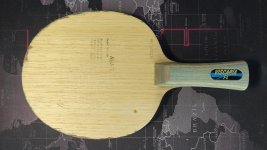So much good stuff in this thread - its a really good and useful read!
I think they key is to try and practice and play against LP as much as you can as the return can vary so much, depending on spin, pace depth on the table etc.
I was similar I think to you
@Wrighty67 in that I was alway apprehensive against playing against them and not having a positive mindset (the worst combo in table tennis - not being confident in your strokes or play).
The last two leagues (1 summer and 1 winter) I have had an older guy with LP ox one side and a good hit on the other side as a team mate. So I get to practice against him regularly.
We played the top of the league team a little while back who had a LP ox player in the side and I beat him comfortably. His team mates said after that you could tell you practice against LP as you made it look much easier than we do against him, and they are both far better players than me! Which was quite a confidence boost (and a lot of ranking points as hes far higher ranked)
Try to keep it as simple as possible, as like I think
@NextLevel or
@Der_Echte mentioned, over thinking too much during play is a recipe for disaster especially with pips. Push one spin one has always been a tactic that works - but if you do spin, spin with quality. I think half baked shots against LP players get punished much more readily than other techniques. But heavy spin either way can be hard to control for LP ox especially. I think it can be easy to think "ok I will play flat and not spin much so i dont get crazy shots back" but its counter productive as you don't play your usual shots - if you get what I mean?












